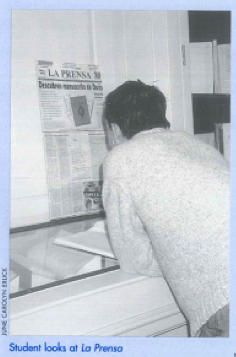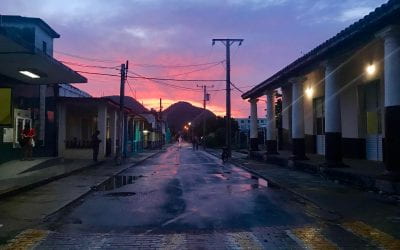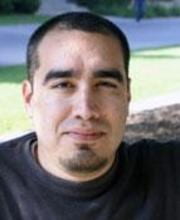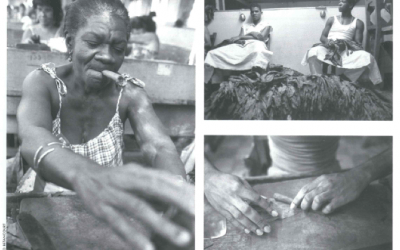Librarian Turned Detective
Harvard in the Literary Limelight

librarian’s mundane afternoon in the Widener Library stacks and a subsequent sleepless night have thrust Harvard into the limelight throughout the Spanish-speaking literary world.
The discovery of two unpublished poems by Nicaraguan modernist Rubén Darío in his own handwriting, as well as dozens of books from his private collection, have sparked headlines in Mexico, Spain, Nicaragua, Argentina, and Miami. Mexican poet and literary critic Carmen Boullosa traveled to Cambridge to see the resulting exhibit “Rubén Darío at Harvard: Books and Manuscripts from the Poet’s Library” at Houghton Library (through January 22) and told her readers in the prestigious Reforma newspaper of Mexico City, “The very trees of Cambridge with their ebullient yet melancholy beauty seemed to applaud the return of our poet to the news.”
Weatherhead Center for International Affairs Harvard University Fellow (1998-1989) Roger Cerda emotionally e-mailed Harvard’s David Rockefeller Center for Latin American Studies, “Here in Nicaragua, this story is all an event. Harvard prestige is being mentioned again and again, because now it is related to our main national glory. For us, Darío is a mix of Faulkner, Twain, etc. all together!” Professor José Antonio Mazzotti, a Darío enthusiast from the Department of Romance Languages and Literatures, invited Nicaraguan poet Julio Valle Castillo, author of a screenplay about Rubén Darío slated to star Antonio Banderas, to lecture on Darío in December with the support of the Gustavo Brillembourg Memorial Fund.
All this international buzz began on a quiet day two years ago when David Whitesell, Houghton library rare book cataloguer, decided to wander over to Widener to check out a minor cataloguing problem.
After completing his task, Whitesell, a former bookseller, began to browse and noticed an attractive old book with a red binding. He discovered that the poetry book, Eglantinas by an obscure Argentine poet named Pedro J. Naón, had a handwritten dedication to Rubén Darío, generally considered the father of Spanish Modernist poetry and one of the greatest poets ever to write in Spanish. As he returned the book to the shelf, the back side of the book caught his attention. The block-stamped publisher’s device on the back cover had carefully been converted into a drawing of a seashell and the words “El Caracol, (Spanish for seashell), Rubén Darío, 1901” were written in eloquent black ink. He opened the book and saw several handwritten pages, thought “this isn’t possible,” and returned the book to its shelf.
Whitesell confesses it was his longest sleepless night. He returned the next day to compare the handwriting inside the book with known examples of Darío’s handwriting. It matched. The book contained two unknown poems, one a fragment of six lines beginning with the words “tristeza, tristeza” (Spanish for sadness, sadness), the other “Epistolas” dedicated to his Paris roommate Amado Nervo, as well as earlier versions of two of Darío’s most famous poems from “Cantos de vida y esperanza”(1905).
Darío had apparently decided to use the gift from the Argentine poet as his own poetry notebook, taking advantage of the fact that the handsome bound edition was printed on only one side of the page.
“It was a very exciting experience for me,” confessed Whitesell, who had studied Darío’s poetry in high school. “I never imagined that I would be the one to first see these poems in his own handwriting.”
Whitesell reasoned there might be more books, and perhaps more manuscripts. Armed with the date of purchase, September 11, 1916, he searched through the Harvard archives until he found the bill, together with a list of 180 books in Spanish offered by a Madrid bookseller to Harvard. Several of the books on the list were clearly marked, “dedicated to Rubén Darío” or “with notes by Rubén Darío.” Harvard Professor J. D. M. Ford, in charge of the acquisition of Spanish and French books at the time, purchased only those books of which the Harvard College Library did not have a copy.
One by one, Whitesell tracked down each book among the five million volumes at Widener. Some carried dedications to Darío; others were bound in the distinctive half red sheep and marble board binding in which Darío dressed many of his books. Of the 180 titles on the list by the Spanish bookseller Joaquín Medinilla, 45 definitely belonged to Darío and another 21 almost certainly did. The Harvard College Library evidently acquired 43 of the 66 Darío volumes, according to Whitesell. It paid the equivalent of $575 in 1999 dollars for them.
Forty of the 43 volumes have been plucked from the Widener stacks and transferred to rare books at Houghton Library. One book became too brittle for use and was replaced by a photocopy, preserving the presentation inscription, and two books are still missing. A few of the other books acquired by Harvard from these lists may possibly be Darío’s, but there is as yet sufficient evidence.
Many of the books had notes by Darío in the margins. Others contain dedications by friends and colleagues such as Delmira Agustini, Alberto Ghiraldo, Ricardo Jaimes Freyre, Leopoldo Lugones, Rufino Blanco-Fombona y Ricardo Rojas. In 1914, Darío’s old friend, the Argentine poet Ricardo Jaimes Freyre, gave him a copy of his classic study of Spanish versification “Leyes de la versificación castellana” (1912). Generations of Harvard students have checked out the book from Widener, perhaps without realizing that the “Rubén Darío” of the dedication was the famous poet.
Yet, the first book discovered was the best; no further manuscripts of Darío’s were found. Whitesell, who tracked down the books in his free time, says the discovery of books owned by Darío at the time of his death in itself is an important contribution to literary scholarship.
“What is clear-and what makes the Harvard find so important-is that nearly all of the 40 Harvard books were ones that Darío chose to keep, and did keep as he moved repeatedly,” Whitesell observed. “Hence we need to view each book, as far as we can, through Darío’s eyes: why did he value it sufficiently to keep it, when others were apparently discarded?”
Winter 2000
June Carolyn Erlick is publications director of the David Rockefeller Center for Latin American Studies. She lived in Nicaragua between 1984 and 1988, and is a self-confessed fan of both Rubén Dario and Antonio Banderas.
Related Articles
Isabelle DeSisto: Student Perspective
encountered the first obstacle of my trip to the Isla de la Juventud before I even left Havana. Since American credit cards don’t work in Cuba, I couldn’t buy my plane tickets online. But that…
Honoring Humanity: An “Interview” with Richard Mora
Mauricio Barragán Barajas: Why don’t we begin by having you introduce yourself? RM: Alright. I was born in East Los Angeles, and grew up in Cypress Park, a barrio in…
Tobacco and Sugar
“Tobacco and Sugar” is the course that focuses American literatures on the Caribbean, and that acknowledges the unavoidable importance of monocultures for cultural studies. Much of the…




